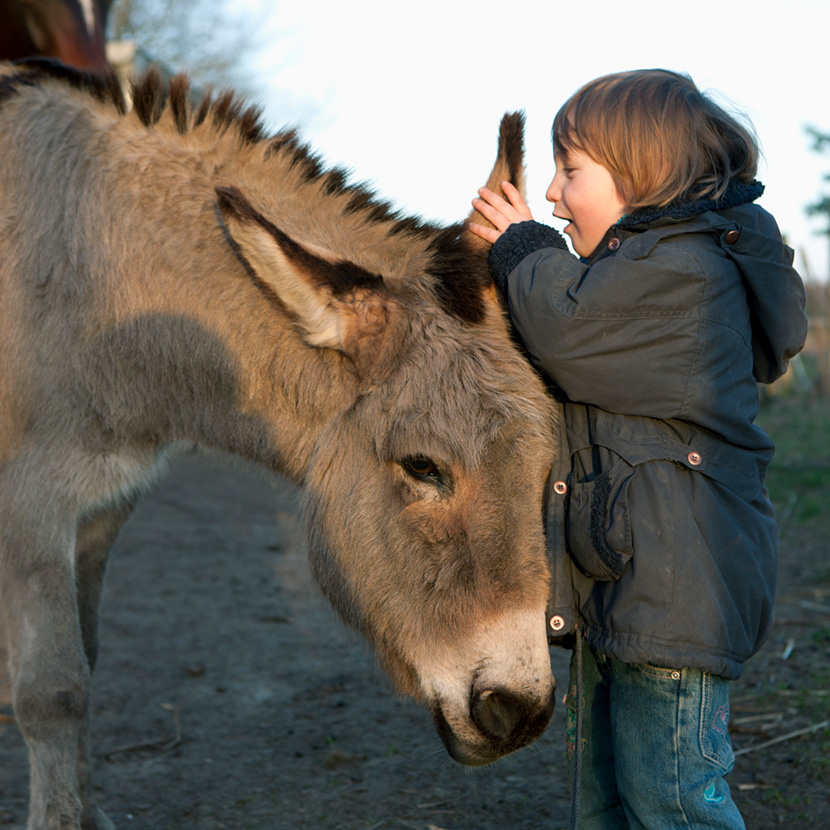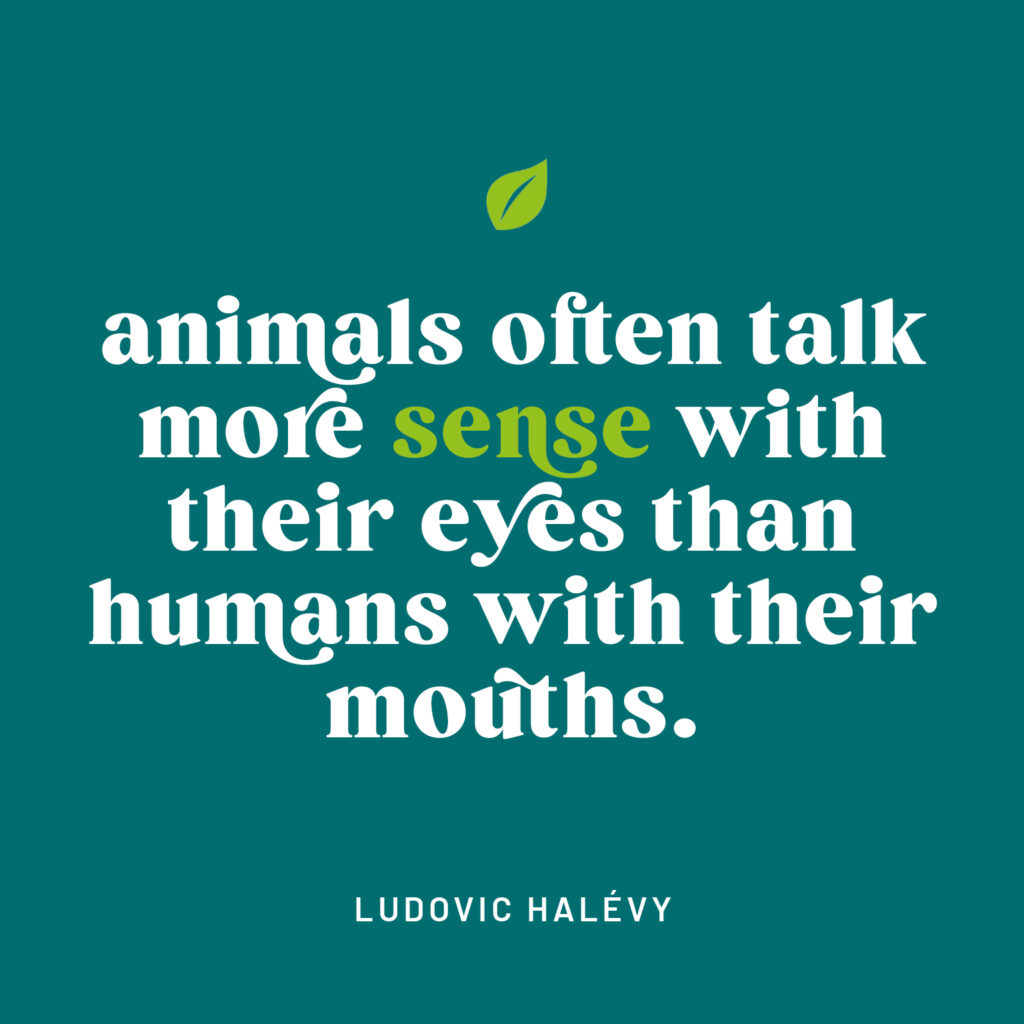ANIMAL WELFARE
Stable whispers & jungle talk

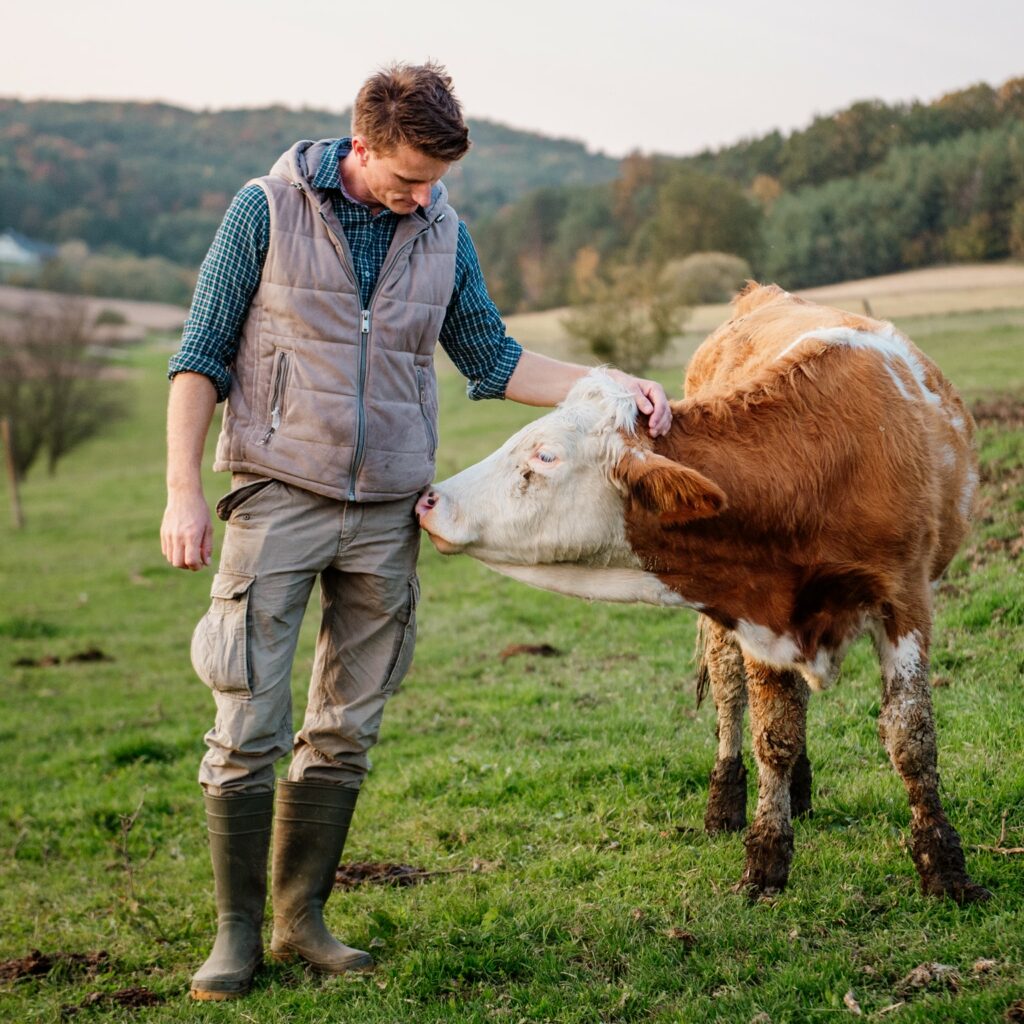
Can we talk to animals?
In the untouched wilderness of Africa, a little girl grew up who teaches us an extraordinary lesson about the relationship between humans and animals. Tippi Degré, often referred to as the ‘real Mowgli’, spent her childhood closely connected to wildlife – from majestic elephants to spotted wild leopards. She talks to the animals and they react. She reads their body language and understands the sounds they make. The pictures her parents took of her and her furry friends as animal film makers are incredibly moving.
Her unique ability to communicate with wild animals not only opens up a magical window to nature, but also serves as powerful proof that communication across species is more profound and meaningful than we could ever have imagined.
While Tippi’s story takes us into the wilderness, there is, however, an equally fascinating, slightly less wild world closer to our everyday lives – that of pigs, cows and the like. For a long time, farm animals were seen merely as suppliers of food and materials. But recent scientific studies show that so-called farm animals communicate in rich and complex ways that reflect their individual personalities, emotions and social bonds. We want to find out more about that. And also shine a spotlight on the opportunities we as humans have that enable us to ‘converse’ with our four-legged friends.
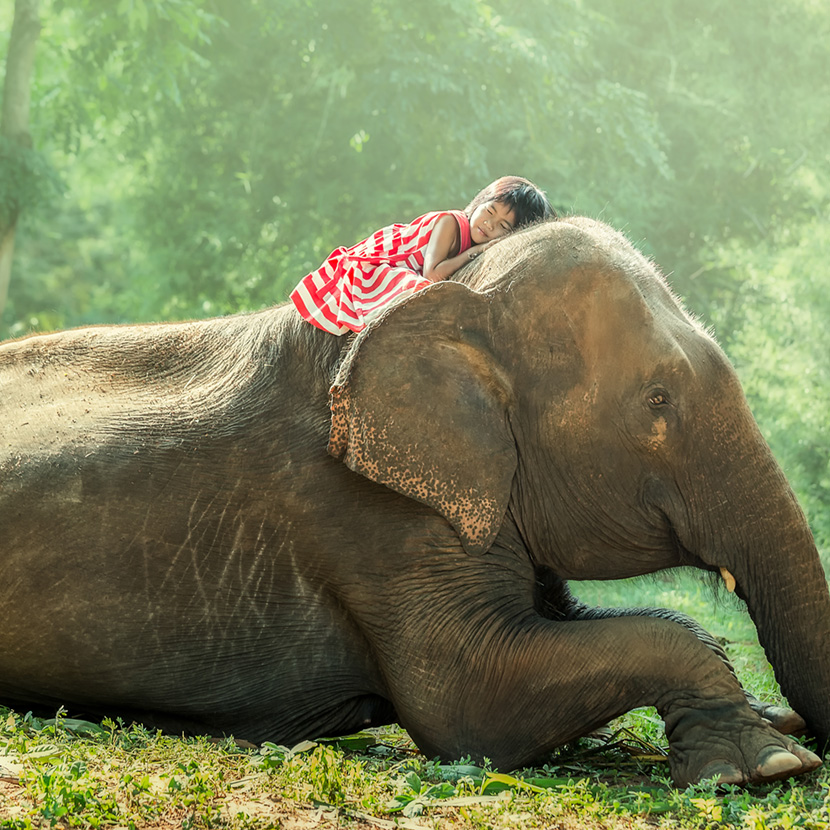
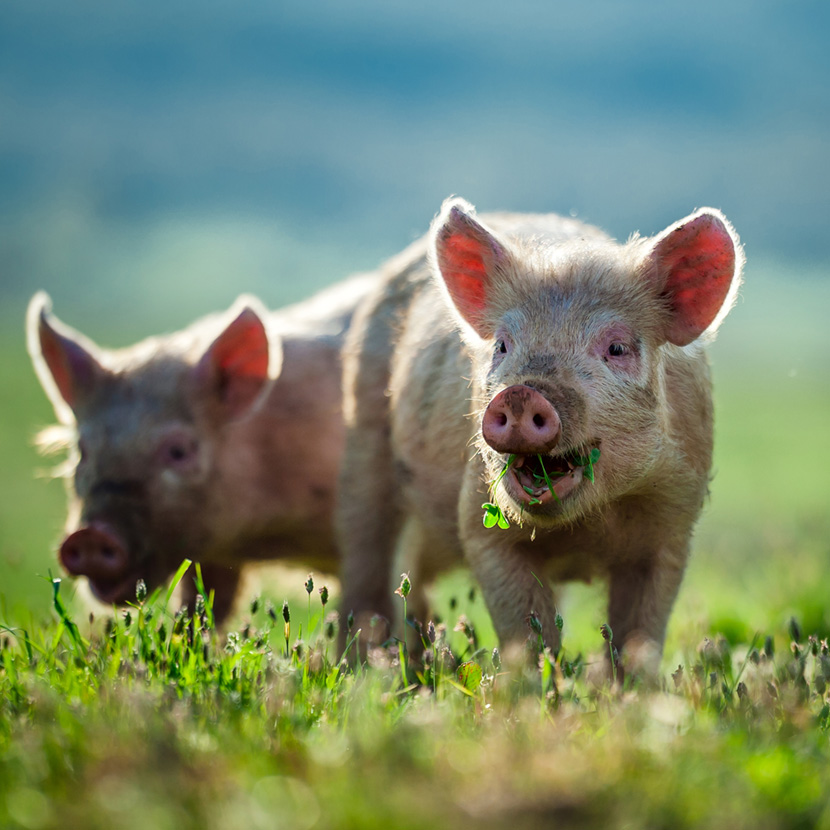
Animal communication ABC
Research has impressively demonstrated that traditional farm animals have an extensive repertoire of communication skills. Body language and an extensive vocabulary of sounds are not unique to us humans.
Pigs, for example, are known for their communicative diversity and can produce an astonishing range of sounds. It is estimated that pigs can make over 20 different grunts and other sounds to communicate a range of states, needs and emotions. These sounds range from grunts of contentment, often heard when eating, to alarming cries signalling discomfort or fear. The ability of pigs to communicate with such a range of vocalisations highlights their social intelligence and the complexity of their interactions with conspecifics. Is it possible for us as humans to participate in their way of communication?
‘Talking to Cows’: Insight into the research
The study with the short name: Talking to Cows: Reactions to Different Auditory Stimuli During Gentle Human-Animal Interactions, phew …, provides deep insights into the sensitive nature of our farm animals and how they react to human communication. This and similar studies have shown that cows not only react to the emotional colour of our voice, but are actually able to recognise and respond to different emotions. These findings suggest that cows have a high level of emotional intelligence, similar to pets with whom we have a close relationship.
The study shows that cows react particularly positively to soft, soothing voices, which leads to a lower heart rate and signs of relaxation. This response is a clear indicator that the emotional state of cows can be directly influenced by the way humans communicate and interact with them. In a wider context, this emphasises the importance of treating farm animals with respect and empathy, which we should get into the habit of calling differently. Example are farm animals and domesticated animals. Do you have another suggestion?
These findings shed a critical light on the practices of livestock farming, especially on an industrial scale, where (such sensitive) interactions between humans and animals are rare. The ability of animals to recognise and respond to emotions should be a strong argument against treatment that sees these sensitive creatures merely as means of production. Pigs in particular have a certain „sense of ego“ and also interact with us on the basis of this self-awareness. But it’s not just about pigs…
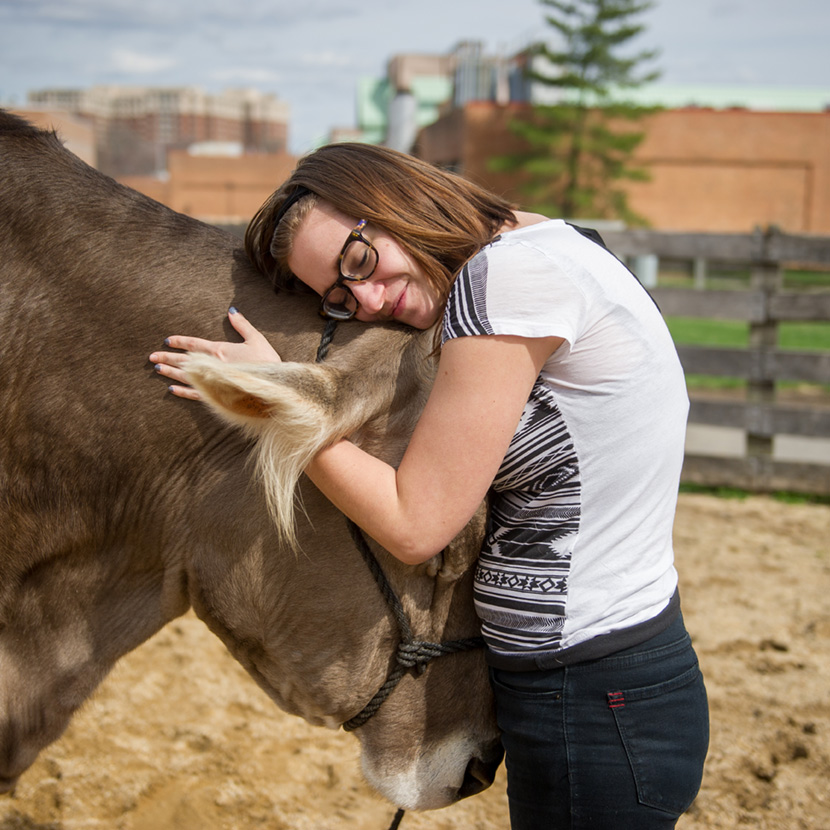
Animal foreign languages at a glance
Here is a summary of further scientific findings about the way some of the most common farm animals communicate with each other and with us:
- Cows have individual calls with which they identify themselves and express their emotions. Studies by the University of Sydney (2020) have shown that these sounds can communicate complex social relationships and emotional states such as joy or stress.
- Pigs use a wide range of grunts to communicate their emotional states. Research from the University of Pennsylvania (2021) shows that pigs have a high level of social intelligence and are able to maintain complex relationships within their group.
- Goats communicate with their kids through unique calls that convey specific feelings and states. According to researchers at Queen Mary University of London (2019), these sounds strengthen the bond between mother and child.
- Sheep recognise and remember the faces of other sheep as well as human faces. This supports complex social communication within the flock, as studies by the University of Cambridge (2018) have shown.
This raises the question of the extent to which we humans are prepared to adopt this language, to „listen“ and behave with empathy.
Amazing discoveries – loud trumpeting and subtle sounds in the wilderness
Beyond these findings on „farm animals“, science has also discovered remarkable forms of communication in the wild (zoosemiotics).
1. Chemical communication: Did you know that ants communicate using chemical signals and fragrance? Certain butterfly species emit pheromones that can deter predators, a strategy that goes beyond mere mate attraction. However, this should not be called toxic relationships 😉

2. Auditory communication: Research has shown that dolphins not only communicate by making whistling sounds, but also use these sounds to create individual „names“ for themselves and others. In other words, they give themselves nicknames.
3. Visual communication: Some crab species use visual signals in the form of spectacular colour patterns on their shells to attract mates and deter rivals. As a warning, bright colours are also common in venomous animals such as snakes.
4. Tactile communication (sense of touch): A startling research finding has shown that elephants can sense vibrations in the ground via their trunks and feet, enabling them to communicate over long distances. Blue whales also use sound waves to communicate.

5. Facial expressions and gestures: Primates such as great apes in particular have a whole range of facial expressions with which they communicate.
The above findings are just a few examples that illustrate the diversity and complexity of zoosemiotics. They are based on general knowledge about animal communication and on concepts that are widely used in research. They broaden our understanding of how animals perceive and interact with the world. They challenge us to rethink our perspective on the non-human inhabitants of our planet and recognise their richness in social relationships.

To all the nerds out there: for specific studies and detailed information, we recommend consulting scientific publications and specialised literature on these topics, as they offer direct insights into the incredible research work and the scientists involved. Our tip: Google Scholar or comparable scientific databases.

The meaning of animal communication for humans
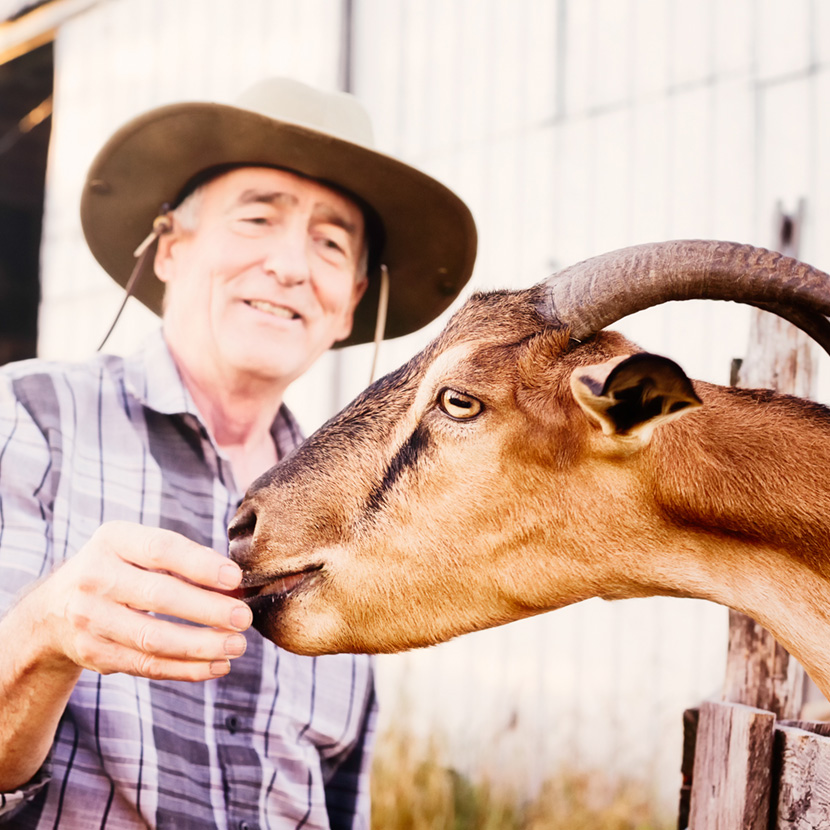
Deeper research into animal communication has not only scientific but also ethical implications. It opens up new avenues for improved animal husbandry and promotes a deeper awareness of the needs and welfare of our animal companions. By learning to understand and respect the language of animals, we can build a deeper connection with them and at the same time take a step towards a more just and compassionate world.
There are now also new, more spiritual approaches to communicating with animals. However, we do not have to abandon science in order to treat our fellow creatures with greater respect through precise perception, empathy and a respectful attitude.
Conclusion: a dialogue transcending species boundaries
The story of Tippi Degré and the latest scientific findings on animal communication remind us that a lively and profound exchange takes place in the supposedly speechless natural world – a dialogue that goes far beyond the human and includes all living beings. By acknowledging and learning to participate in this dialogue, we can not only deepen our understanding and relationship with animals, but also make a valuable contribution to a more empathetic and sustainable world.
The ability to communicate and interact across species boundaries is not only a miracle of nature, but also a powerful instrument of change – for all of us.
